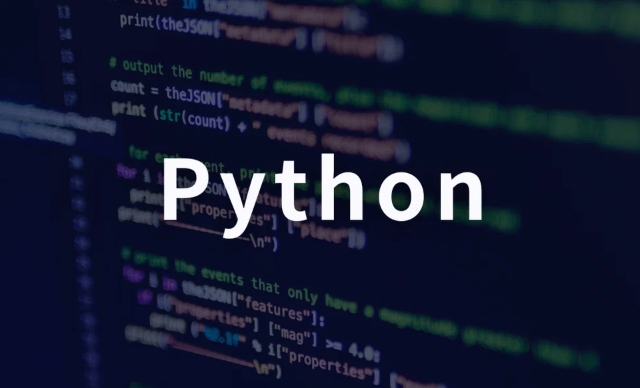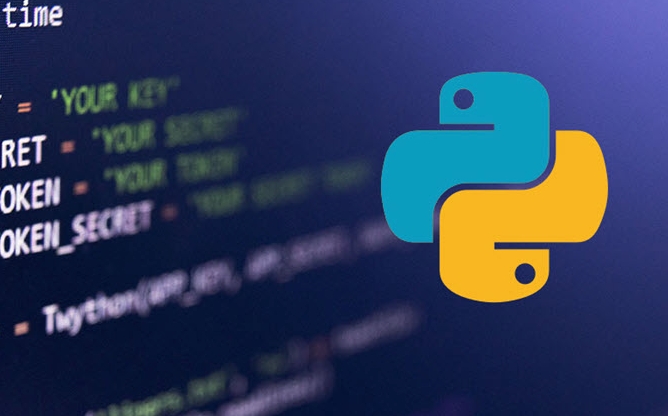Luigi is a Python library for defining, scheduling, and monitoring complex data pipelines and workflows, especially for scenarios where dependencies exist between tasks. 1. Each task is a Python class that defines operations, dependencies, and outputs; 2. Declare task dependencies using the requires() method; 3. Define task outputs through the output() method, usually file or database entries; 4. Parameterize tasks to support different inputs; 5. Use retry_delay and failure_limit to achieve automatic retry of task failures; 6. Handle external call exceptions in combination with try/except blocks; 7. Use luigi.contrib module to support cloud storage and databases; 8. Run tasks through the command line or central scheduler; 9. Monitor task status through the Web UI; 10. It is recommended to combine log and alarm systems for production environments. Luigi is lightweight and natively supported by Python, suitable for a variety of workflow management needs.

When you need to manage complex data pipelines or workflows, Python's Luigi library offers a powerful but approachable way to define, schedule, and monitor tasks. It's especially useful when you have dependencies between tasks, need to track their status, or want to avoid re-running completed steps. Here's how to work with it effectively for complex settings.

Understanding the Core Concepts
Luigi works by letting you define tasks and their dependencies. Each task is a Python class that defines what needs to be done, what it depends on, and what output it produces. At its heart are a few key ideas:
- Task : A unit of work. It might run a script, fetch data, or transform a file.
- Target : Represents the output of a task — often a file on disk or a database entry. Luigi uses this to determine if a task needs to run.
- Dependency : A task can require one or more other tasks to complete before it can run.
This structure makes it easy to model complex chains and parallelizable steps.

Structuring a Multi-Step Pipeline
When building a multi-step workflow, it helps to think in layers. Each task should be self-contained and only care about its inputs and outputs. Here's how to structure it:
- Break down the workflow into logical steps. For example, downloading data, cleaning it, analyzing it, and generating a report.
- Use
requires()to link tasks. If Task B needs the output of Task A, make Task B'srequires()return an instance of Task A. - Use
output()to define what each task produces. This is usually aLocalTarget(a file), but it can also be a remote file or a database entry. - Parameterize tasks with
Parameter()objects so you can reuse them with different inputs.
This modular approach makes your workflow easier to test, debug, and scale.

Managing External Dependencies and Retries
Real-world workflows often involve external systems — APIs, databases, or third-party services — which can fail unpredictably. Luigi has built-in support for handling some of this:
- Use
retry_delayandfailure_limitin your task class to automatically retry failed tasks after a delay. - Wrap external calls in try/except blocks and log meaningful errors so you can understand what went wrong.
- Use
luigi.contribmodules likeS3TargetorMySQLTargetif you're working with cloud storage or databases.
Also, remember that Luigi doesn't automatically clean up failed runs — you'll need to handle that manually or write cleanup tasks if needed.
Running and Monitoring Your Workflow
Once your tasks are defined, you can run them from the command line or via a scheduler:
- Run locally with
python -m luigi --module your_module YourTaskNameto test things out. - Use the central scheduler (
--scheduler-host) for better visibility and coordination when running multiple tasks across systems. - Check the web UI at
http://localhost:8082(default) to see the status of your tasks, their dependencies, and any failures.
If you're running in production, consider integrating with logging systems or alerting tools to get notified of failures.
Final Notes
Luigi isn't the only workflow tool out there — Airflow and Prefect are popular alternatives — but it's lightweight and Python-native, which makes it a solid choice for many use cases. Just remember to keep your tasks idealpotent where possible, test your dependencies thoroughly, and take advantage of the ecosystem modules when dealing with external systems.
That's pretty much it. It's not overly complex, but there are enough moving parts that a little planning goes a long way.
The above is the detailed content of Implementing Complex Workflows with Python Luigi. For more information, please follow other related articles on the PHP Chinese website!

Hot AI Tools

Undress AI Tool
Undress images for free

Undresser.AI Undress
AI-powered app for creating realistic nude photos

AI Clothes Remover
Online AI tool for removing clothes from photos.

Clothoff.io
AI clothes remover

Video Face Swap
Swap faces in any video effortlessly with our completely free AI face swap tool!

Hot Article

Hot Tools

Notepad++7.3.1
Easy-to-use and free code editor

SublimeText3 Chinese version
Chinese version, very easy to use

Zend Studio 13.0.1
Powerful PHP integrated development environment

Dreamweaver CS6
Visual web development tools

SublimeText3 Mac version
God-level code editing software (SublimeText3)
 How to handle API authentication in Python
Jul 13, 2025 am 02:22 AM
How to handle API authentication in Python
Jul 13, 2025 am 02:22 AM
The key to dealing with API authentication is to understand and use the authentication method correctly. 1. APIKey is the simplest authentication method, usually placed in the request header or URL parameters; 2. BasicAuth uses username and password for Base64 encoding transmission, which is suitable for internal systems; 3. OAuth2 needs to obtain the token first through client_id and client_secret, and then bring the BearerToken in the request header; 4. In order to deal with the token expiration, the token management class can be encapsulated and automatically refreshed the token; in short, selecting the appropriate method according to the document and safely storing the key information is the key.
 Explain Python assertions.
Jul 07, 2025 am 12:14 AM
Explain Python assertions.
Jul 07, 2025 am 12:14 AM
Assert is an assertion tool used in Python for debugging, and throws an AssertionError when the condition is not met. Its syntax is assert condition plus optional error information, which is suitable for internal logic verification such as parameter checking, status confirmation, etc., but cannot be used for security or user input checking, and should be used in conjunction with clear prompt information. It is only available for auxiliary debugging in the development stage rather than substituting exception handling.
 How to iterate over two lists at once Python
Jul 09, 2025 am 01:13 AM
How to iterate over two lists at once Python
Jul 09, 2025 am 01:13 AM
A common method to traverse two lists simultaneously in Python is to use the zip() function, which will pair multiple lists in order and be the shortest; if the list length is inconsistent, you can use itertools.zip_longest() to be the longest and fill in the missing values; combined with enumerate(), you can get the index at the same time. 1.zip() is concise and practical, suitable for paired data iteration; 2.zip_longest() can fill in the default value when dealing with inconsistent lengths; 3.enumerate(zip()) can obtain indexes during traversal, meeting the needs of a variety of complex scenarios.
 What are Python type hints?
Jul 07, 2025 am 02:55 AM
What are Python type hints?
Jul 07, 2025 am 02:55 AM
TypehintsinPythonsolvetheproblemofambiguityandpotentialbugsindynamicallytypedcodebyallowingdeveloperstospecifyexpectedtypes.Theyenhancereadability,enableearlybugdetection,andimprovetoolingsupport.Typehintsareaddedusingacolon(:)forvariablesandparamete
 What are python iterators?
Jul 08, 2025 am 02:56 AM
What are python iterators?
Jul 08, 2025 am 02:56 AM
InPython,iteratorsareobjectsthatallowloopingthroughcollectionsbyimplementing__iter__()and__next__().1)Iteratorsworkviatheiteratorprotocol,using__iter__()toreturntheiteratorand__next__()toretrievethenextitemuntilStopIterationisraised.2)Aniterable(like
 Python FastAPI tutorial
Jul 12, 2025 am 02:42 AM
Python FastAPI tutorial
Jul 12, 2025 am 02:42 AM
To create modern and efficient APIs using Python, FastAPI is recommended; it is based on standard Python type prompts and can automatically generate documents, with excellent performance. After installing FastAPI and ASGI server uvicorn, you can write interface code. By defining routes, writing processing functions, and returning data, APIs can be quickly built. FastAPI supports a variety of HTTP methods and provides automatically generated SwaggerUI and ReDoc documentation systems. URL parameters can be captured through path definition, while query parameters can be implemented by setting default values ??for function parameters. The rational use of Pydantic models can help improve development efficiency and accuracy.
 How to test an API with Python
Jul 12, 2025 am 02:47 AM
How to test an API with Python
Jul 12, 2025 am 02:47 AM
To test the API, you need to use Python's Requests library. The steps are to install the library, send requests, verify responses, set timeouts and retry. First, install the library through pipinstallrequests; then use requests.get() or requests.post() and other methods to send GET or POST requests; then check response.status_code and response.json() to ensure that the return result is in compliance with expectations; finally, add timeout parameters to set the timeout time, and combine the retrying library to achieve automatic retry to enhance stability.
 Python variable scope in functions
Jul 12, 2025 am 02:49 AM
Python variable scope in functions
Jul 12, 2025 am 02:49 AM
In Python, variables defined inside a function are local variables and are only valid within the function; externally defined are global variables that can be read anywhere. 1. Local variables are destroyed as the function is executed; 2. The function can access global variables but cannot be modified directly, so the global keyword is required; 3. If you want to modify outer function variables in nested functions, you need to use the nonlocal keyword; 4. Variables with the same name do not affect each other in different scopes; 5. Global must be declared when modifying global variables, otherwise UnboundLocalError error will be raised. Understanding these rules helps avoid bugs and write more reliable functions.






